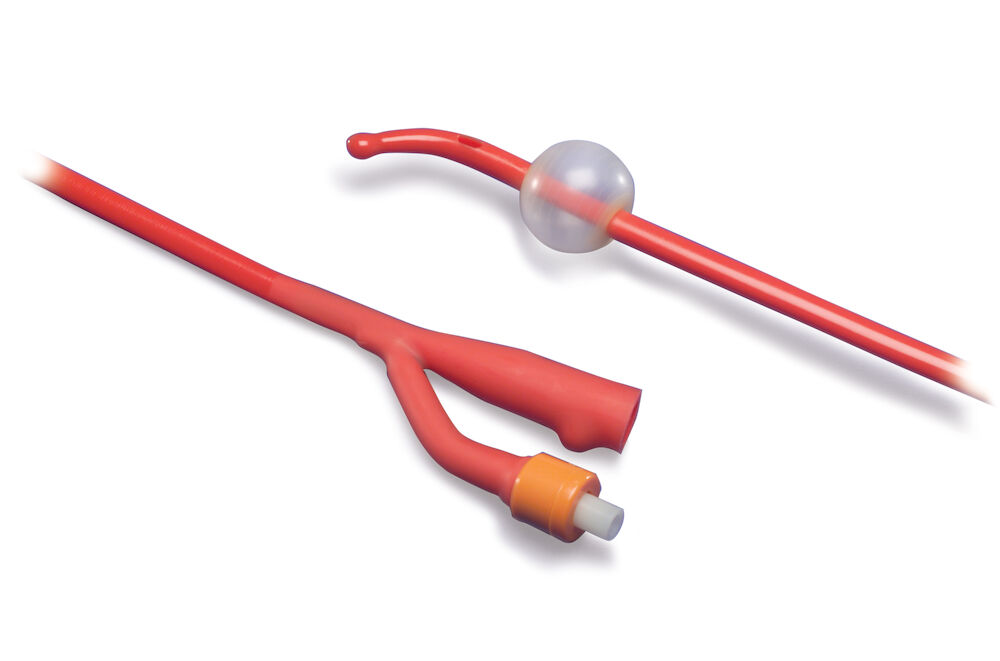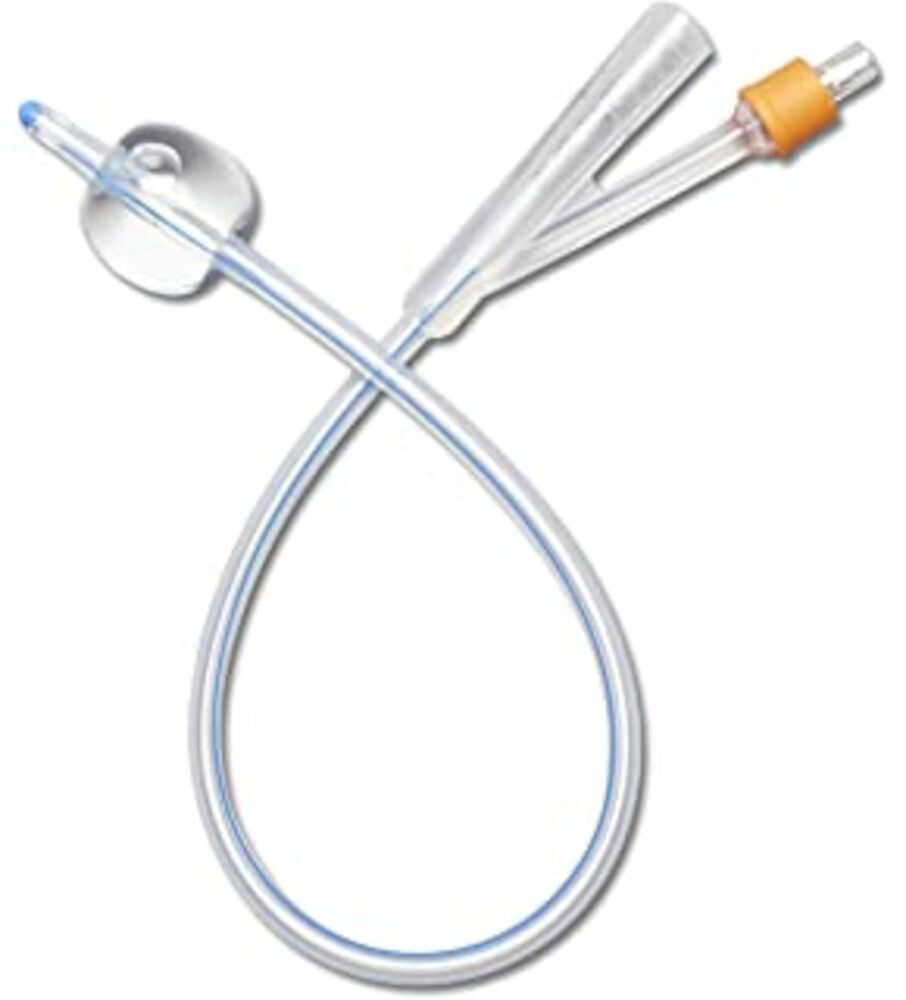|
•
For children, catheters are usually intermittent and used to pull a sterile urine sample to check for infections. For women, a 12-16 French catheter is most commonly used and a 3-way is indicated in cases of gross hematuria. For men, it is typical to use a 16-18 French catheter, which can be used with lidocaine jelly to reduce insertion discomfort. In cases of gross hematuria in men, 3-way Foleys are used with the largest French size that can be tolerated, usually a 22-24 French. Catheter lengths include 6-12 inches for pediatric use, 6-8 inches for women (though a male-length catheter may be preferred in some cases), and 16 inches for men. The longer length of catheters may also be used for obese females.
There are three types of coude tip catheters, some with or without balloons, including: -the tapered tip, which has a short and strong tip to bypass enlarged prostate glands and urethral traumas, -the olive tip, which has a small ball shaped bead for smoother passage in cases of obstruction and false passages, and -the Tiemann tip, which has an elongated and tapered tip that is more pliable to more comfortably place through narrow passages in cases of BPH, distended bladders, enlarged prostate glands.
Balloons are present in both urethral and supra-pubic catheter placements. Balloon size varies, as well. Generally 10 milliliter balloons are a standard for adults and smaller 2.5 to 5 milliliter balloon sizes may be used for children, although the use of the smallest balloon possible can help to reduce the risk for development of residual urine in the bladder and bladder neck irritation. While the balloon is generally filled with sterile water, this could be a problem in silicone catheters, which may lose water over time and cause the catheter to fall out. Recommendations have included filling the balloon with a full 10 ml of sterile water knowing that up to half of that amount may be lost, or using a 10% aqueous glycerine solution. |



.h1.jpg)

